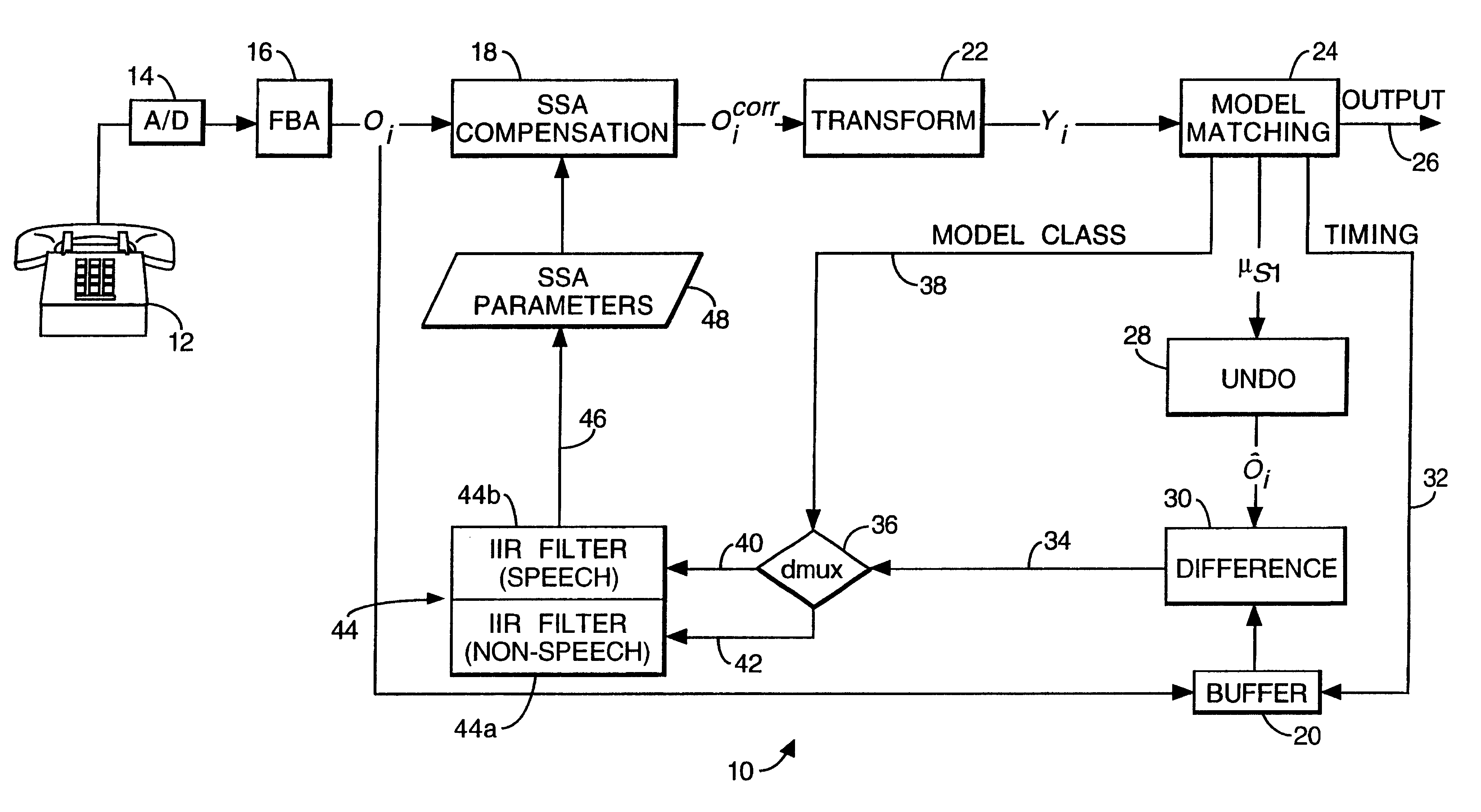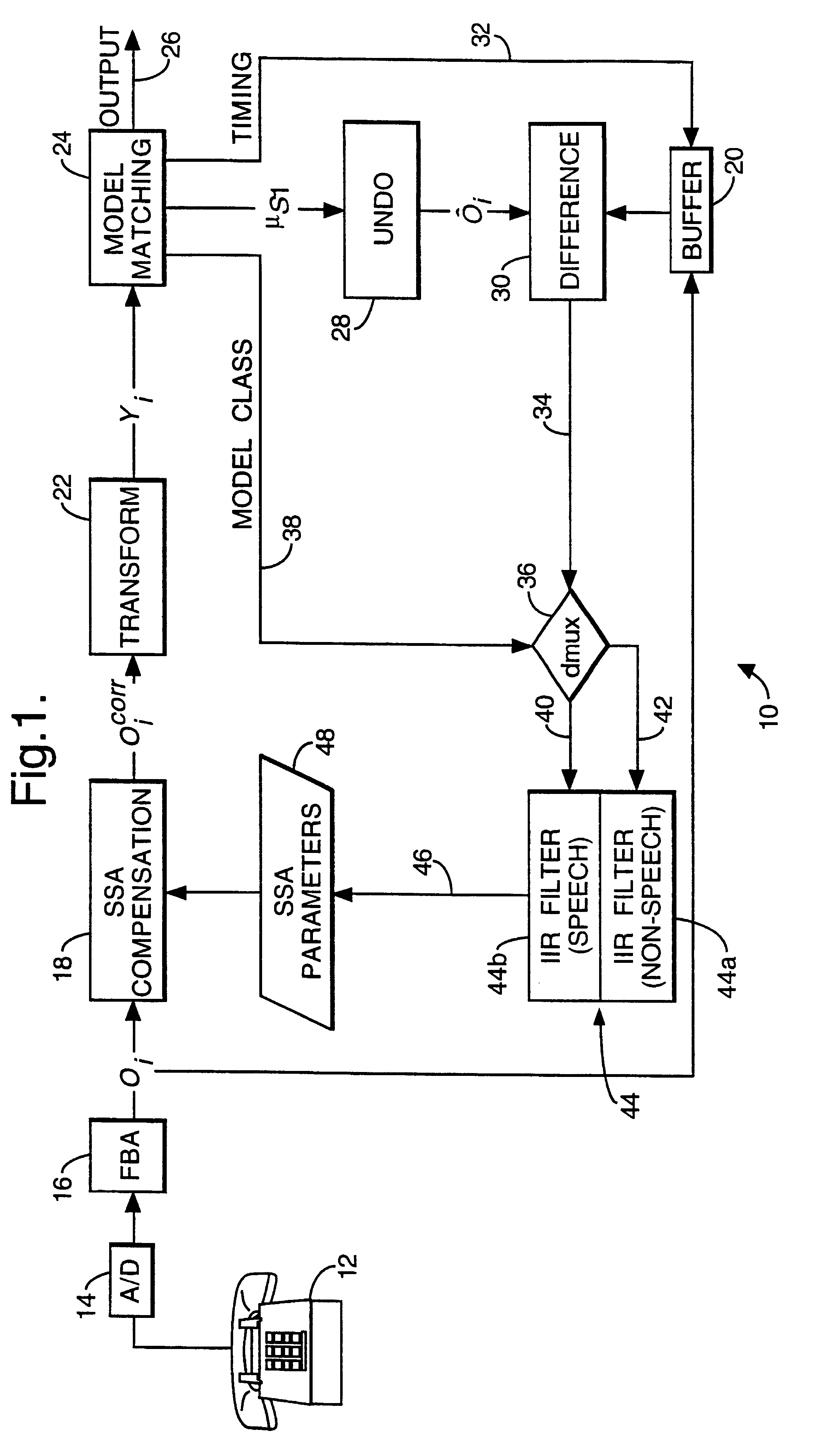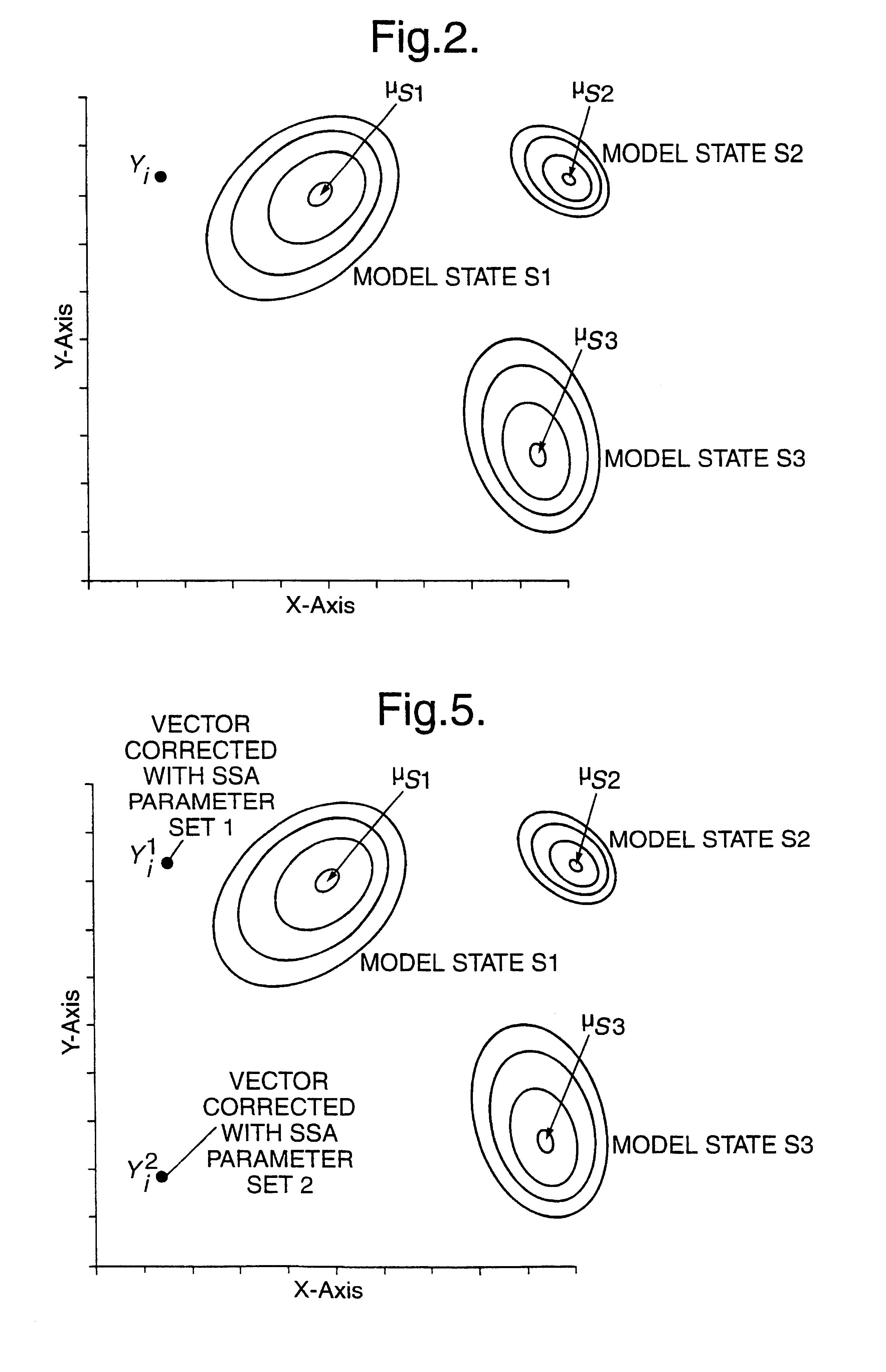Recognition system
a recognition system and speech recognition technology, applied in the field of recognition systems, can solve the problems of difficult to provide effective agc, affect speech recognition system performance, and affect speech level changes
- Summary
- Abstract
- Description
- Claims
- Application Information
AI Technical Summary
Benefits of technology
Problems solved by technology
Method used
Image
Examples
Embodiment Construction
Referring to FIG. 1, an embodiment of the invention in the form of a speech recognition system is indicated generally by 10. The system 10 incorporates a telephone 12 connected to an analogue to digital (A / D) converter 14, which is itself connected to a filterbank analyser 16. The analyser 16 implements a four hundred point discrete Fourier transform (DFT) using a 20 mS Hamming window to deal with the usual problem of non-infinite signal samples. It combines the Fourier components so obtained into twenty-six subsets over which average values are obtained for each of twenty-six frequency intervals or bins on an approximately mel (ie perceptually linear) scale, and produces logarithmic amplitude values. It therefore simulates a bank of bandpass filters with logarithmic outputs in twenty-six channels. Output from the analyser 16 passes both to a compensation unit 18 which provides spectral shape adaptation (SSA) and to a buffer memory 20. The SSA compensation unit 18 is a digital adder...
PUM
 Login to View More
Login to View More Abstract
Description
Claims
Application Information
 Login to View More
Login to View More - R&D
- Intellectual Property
- Life Sciences
- Materials
- Tech Scout
- Unparalleled Data Quality
- Higher Quality Content
- 60% Fewer Hallucinations
Browse by: Latest US Patents, China's latest patents, Technical Efficacy Thesaurus, Application Domain, Technology Topic, Popular Technical Reports.
© 2025 PatSnap. All rights reserved.Legal|Privacy policy|Modern Slavery Act Transparency Statement|Sitemap|About US| Contact US: help@patsnap.com



